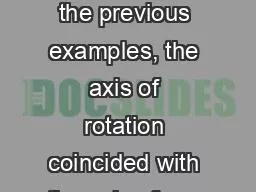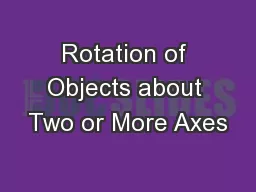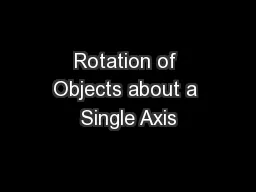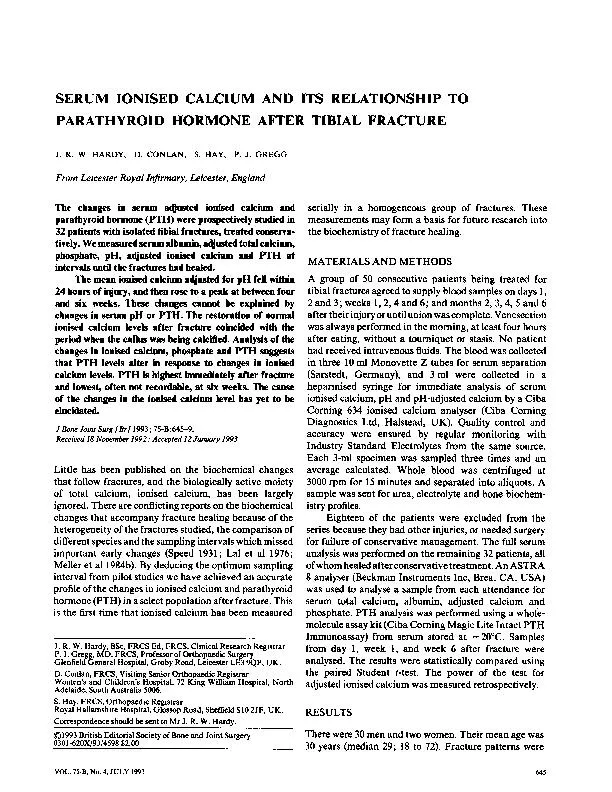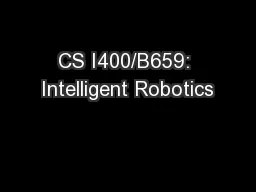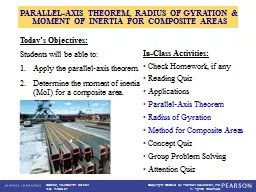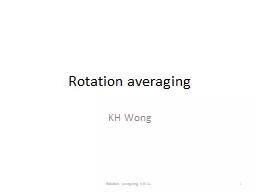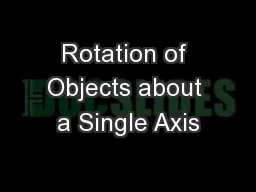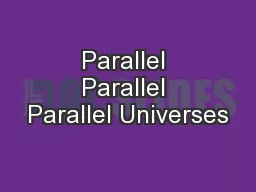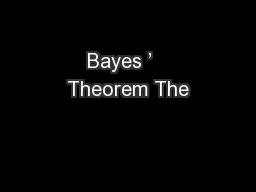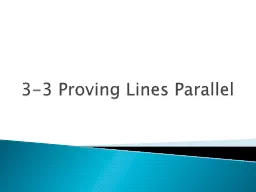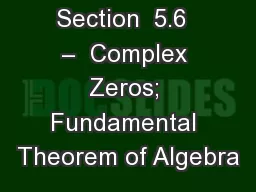PPT-Parallel-Axis Theorem In the previous examples, the axis of rotation coincided with the
Author : patchick | Published Date : 2020-07-02
For an arbitrary axis the parallelaxis theorem often simplifies calculations The theorem states I I CM MD 2 I is about any axis parallel to the axis through
Presentation Embed Code
Download Presentation
Download Presentation The PPT/PDF document "Parallel-Axis Theorem In the previous ex..." is the property of its rightful owner. Permission is granted to download and print the materials on this website for personal, non-commercial use only, and to display it on your personal computer provided you do not modify the materials and that you retain all copyright notices contained in the materials. By downloading content from our website, you accept the terms of this agreement.
Parallel-Axis Theorem In the previous examples, the axis of rotation coincided with the: Transcript
Download Rules Of Document
"Parallel-Axis Theorem In the previous examples, the axis of rotation coincided with the"The content belongs to its owner. You may download and print it for personal use, without modification, and keep all copyright notices. By downloading, you agree to these terms.
Related Documents

